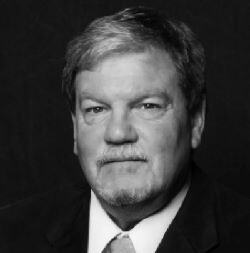Facilities
Today & tomorrow

The discipline of facility management is one of various paradoxes. Things stay the same, but they are constantly changing. New trends constantly arise, but they are variations of existing practices. Responsibilities may remain the same but due to new developments, the initial focus may change. This keeps the life of an FM interesting.
A trend is a new standard or practice that gains popularity and is emulated by others. It originates in a specific context and then it perpetuates as adoption increases amongst users. It is the beginning of a new direction, taking a turn or a twist to something that already exists. Trends are like a river, flowing down from on high, rushing down its bed… some of it branches off to become streams, rivers, and trickles, fading to get bogged down in marshes. The main course continues forward, gaining momentum, fed by tributaries, until it becomes part of the mainstream. It starts as something new and then over time, will become more normal before it, in turn, evolves to a new initiative, or a new variation on a theme.
Trends are fickle. They can turn into a fad or develop into a tool for continuous improvement. The trend cycle is dynamic, and what becomes popular can change rapidly, especially in today’s fast-paced digital landscape. In facilities, trends that do take hold could signify a dramatic change in the way FMs operate. It may entail a shift in importance or priorities concerning specific practices. A focus in one area may become more intense or require deeper implementation. Things that seem constant can swirl l as aspects change. For a trend to take off, it must resonate with a wide audience, be accessible, and often, be timely in addressing immediate interests or needs. Trendsetting can influence behaviors, styles and even societal norms.
Using less is better
One of the most prevalent trends in FM is sustainability. Focus on environmental issues is increasing, as federal and local laws and the need for a positive position in the market dictate. Out of necessity, more businesses are devoting resources to carbon footprint. Part of that burden falls directly onto the FM.
Sustainability is a trend that keeps growing and developing, evidenced by green programs and even IFMA’s competencies and credentials. It is affecting the built environment in leaps and bounds. FMs’ role is evolving with this trend. It goes beyond sustainable practices, such as better environmental management, and involves documenting and reporting company efforts to reduce greenhouse gas emissions and conserve vital resources. This continues to take on higher priorities in FM.
FMs must ensure operations run smoothly and efficiently with resource conservation in mind while tracking efforts and progress.
Guiding general principles shaped by environmental concerns are more commonly shared and pursuing goals related to sustainability is a standard element of corporate social responsibility and good business practice. Acronyms are surfacing in the corporate world and, by default, into the realm of FM. There is EHS (environmental health and safety, CSR (corporate social responsibility) ESG (environmental and social governance) and GHG (greenhouse gas), to name a few. Even the vocabulary of an FM is expanding.
Organizations realize sustainability is tied to economic outcomes and that a significant dollar value can be attributed to the high-impact actions FMs make when pursuing sustainable solutions. The impetus will be on assisting businesses to save energy and reduce their carbon footprint. Findings reveal that in the U.S. alone, the adoption of energy-efficient approaches can reduce GHG emissions by 10 percent per year To contribute to such positive changes, environmental consciousness will have reinforcement as FMs continually assess their operations and adjust as is possible.
Thus, sustainability can be seen from multiple perspectives – how the business helps minimize the impact on the environment, how their employees can be more productive, and how it makes its own growth sustainable. FMs serve as facilitators in realizing these sustainability goals. In terms of business sustainability, FMs will be more focused on bringing manifold improvements in profitability, operational effectiveness7, and team efficiency.
Office trends
The face of the office is changing. One of the lessons from the COVID-19 pandemic was that employees could work remotely and still be productive. After the crisis, some still preferred remote work, some opted to work in the office while others asked for a mixture of both. FMs are tasked with expanding and contracting space needs to meet demands from a distributed workforce.
In this revamped office scenario, the old standard of working on a fixed schedule at a designated desk may be a thing of the past. Among the many changes to the workplace caused by the pandemic, the emergence of remote and hybrid work models has become significant.
Due to this evolution in office working, resources need to be available to accommodate random and unpredictable peaks in attendance at offices and other workspaces. Employees need to have easy access to available workspaces, meeting rooms, collaborative spaces, and other areas. They must be able to work without any disruptions that could lead to downtime and wasted productivity. A reservation system and a hoteling policy should be devised and implemented to minimize confusion or distress on the part of the employees.
Also, while many workers are slowly coming back to the office, both full-time and part-time, a fundamental shift has taken place that allows employees to work from home permanently. This has obvious implications regarding office space, seating, and amenities in the workplace.
It is easy to understand that office space can be easily made smaller, quite another to do it in a way that does not disrupt operations or leave too little space. Finding the balance between achieving savings and keeping sufficient space to fulfill the company mission will continue stretch the innovative skills and common sense of an FM.
Another positive trend gleaned from the pandemic is the increased awareness of health and hygiene in the workplace. FMs are even more aware of managing the comfort and well-being of all personnel. This is nothing new, but it has achieved heightened visibility and extraordinary importance.
There are concerns that employee well-being is still suffering after the pandemic. Employees are struggling with stress, burnout and loneliness. Employee wellness concerns both their physical and mental health. It is the result of dynamics within the workplace, and is integral to enabling employees to manage stress, improve productivity and reduce burnout.
FMs must manage the built environment so that they contribute to employee well-being in a positive way. Indoor environmental quality is extremely important in this regard. Clean air, good circulation, quality lighting and noise attenuation all contribute to a healthy workplace. Amenities that provide areas for exercise, healthy food and drink and social interaction are all beneficial. The hope is to mitigate any sedentary habits or external stimuli that could lead to physical ailments.
There is also an extensive connection between employee recognition and well-being. Employees who receive the right amount of recognition for their work performance suffer from less burnout, feel more emotionally strong, and can form stronger relationships with their co-workers. The business benefits of high well-being are enhanced by optimum recognition. From a facilities perspective, this is where people skills enter the picture. A smile and kind words to customers can really help to add a positive spin on their day.
Data never lies
More recent trends include the widespread adoption of emerging technology-based solutions. Amidst the shifts that the industry is witnessing, technology has emerged as a strong transformation driver. New standards of the Internet of Things (IoT) and data-driven operations are opening new avenues for innovation. FMs are constantly improving performance, and these capabilities can help them to become more efficient and enhance their quality of service.
IoT’s cost savings and effectiveness means data-driven solutions are now essential in dealing with important issues on the agenda of any FM team. There are more opportunities to use technology and to improve the efficiency of FM. IoT-powered solutions are proving themselves to be well-worth their investment.
With the increasing availability of data and analytics tools, FMs are poised to make better-informed decisions about their buildings. The information can be used to fine tune many activities, from maintenance schedules to energy usage. Data-driven decisions will be extremely valuable in enabling improvements in the efficiency and effectiveness of facility operations.
IoT infrastructure also provides options that are relevant to FM. FMs can monitor room occupancy and environmental conditions. Climate control and lighting can be managed remotely, maintaining necessary comfort when needed and curtailing energy use when areas are unutilized.
Everything from building automation and control systems to energy management systems to security systems can be tracked. As the cost of water and electricity rises, technology can help FMs reduce consumption and be more cost efficient. Technology can also be a powerful tool for tracking and managing inventory control. By using asset tracking software, FM staff can locate the items they need, identify how they are utilized, and reflect a timeline for when items should be replaced or repaired.
Technology solutions are a viable resource in meeting the challenges facing FMs. They combine the capabilities to track, collect, store and analyze data. This replaces guesswork and manual observation with essential data that provides an accurate picture as to how the operations of the facility impact the business. However, as the journey to optimizing and innovation continues, FMs must carefully plan their processes. Trends are unfolding fast and sometimes make others obsolete. Some have already started penetrating the industry, promising to dominate in forthcoming years.
And so ...
FM is a relevant and necessary function for business success. It combines people and process efficiency, workplace productivity and sustainability and dictates how businesses can work.
The hybrid approach to work is dictating how office spaces are organized. Aligned with sustainability efforts, prompted in part by the cost of energy, which are steadily increasing Combined with the implementation of new technology, there is much to suggest that putting sustainability at the center of FM practices has an impact on a company’s carbon footprint. <
all point toward environmental health and safety. Not in the traditional sense of EHS, but with a focus on the environment, on the health of employees and the safety of personnel and the entire facility. This serves to strengthen the holistic approach FMs must take when managing their buildings. From an overall view, the integration of trends and the concepts of the triple bottom line are aligning nicely.
The river keeps flowing, fed by ever more trends that affect FM. One wave is the circular economy, a next step in sustainability efforts. Physical security in the workplace is becoming more pronounced to ensure that employees are safe, as well as happy and productive. Cybersecurity is an integral by-product of technology as FMs start tying in processes enterprise wide.
The flow promises to continue, developments upon developments, and FMs must continue navigating that river.

Bill Conley, CFM, SFP, FMP, LEED AP, IFMA Fellow, is a facility manager at Yamaha Motor Corp. in Cypress, California, USA. He previously served as owner and chief sustainability officer of CFM2, a facility management company. Conley has more than 40 years of experience in the facility management profession and has been a proponent of sustainable operations for more than 20 years. Conley has served on the IFMA board of directors, is a recipient of IFMA’s Distinguished Member of the Year award and has received the association’s Distinguished Author award three times. He has been a regular contributor to FMJ for almost 30 years and has authored more than 100 FMJ articles.
Read more on Leadership & Strategy , Project Management and Career Advancement
Explore All FMJ Topics









